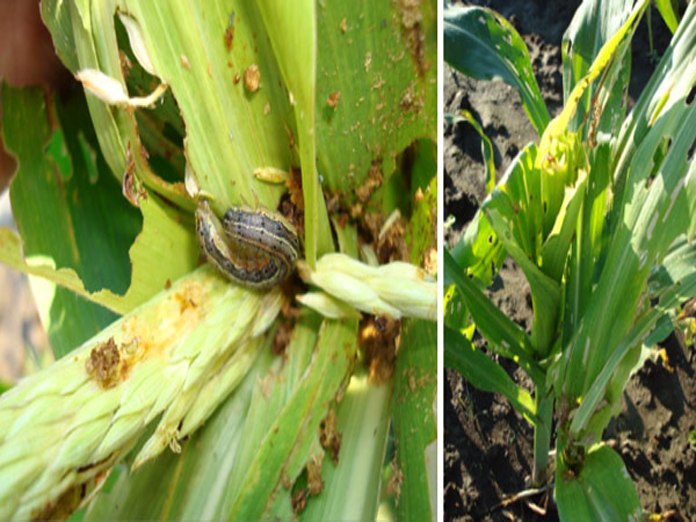Live
- Pant shatters Iyer's IPL auction record, sold to Super Giants for Rs 27 cr
- Yuva Sangeetha Sammelanam held
- Dharani proves a bane for 25K families across State
- Reckless, Dangerous Arms Race
- Russia needs a peace deal as it is running out of soldiers
- MyVoice: Views of our readers 25th November 2024
- Lack of planning, weak narrative behind MVA debacle
- UTF dist unit golden jubilee celebrations begin
- TSIC launches ‘Innovations 101’ coffee table book
- Drone technology for crime control
Just In

Andhra Pradesh is the only state that effectively controlled the Fall Armyworm FAW in the country, during kharif and rabi seasons in 201819 agriculture year
Amaravati: Andhra Pradesh is the only state that effectively controlled the Fall Armyworm (FAW) in the country, during kharif and rabi seasons in 2018-19 agriculture year. The agriculture department predicted maize in 1,870 hectare (Ha) in 60 mandals all over the state during kharif and 5,380 Ha in 92 mandals in 11 districts during rabi season as FAW hotspots. The rabi crop is at vegetative to cob formation stage at present.
Special Chief Secretary (agriculture and cooperatives) B Rajasekhar told The Hans India that they had got information that the FAW was coming all the way from America to India and there was a possible threat to the maize and jowar crops. Realising the seriousness of the possible damage, the state government predicted the hotspots and pest advisories were given to the farmers in villages.
The agriculture department officials swiftly educated the farmers on issues like from which direction the pest was coming, where would it give birth, how to control and all other preventive measures.
Following the alerts by the government authorities, the farmers across the state, particularly in the hotspots, immediately executed the advisories. In this process the state government also took the support from Acharya NG Ranga Agriculture University and other agricultural institutions, Rajasekhar said.
Sources in the government said with the help of Internet of Things (IoT) devices the government was able to effectively monitor water, moisture, temperature, air quality and wind direction and on the basis of that knowledge, the agriculture officials undertook the predictive analytics of pest and seasonality. Historical data of the pest was also taken into consideration. Based on that the government predicted the hotspots very easily, said sources.
The FAW first attacked Karnataka state and then entered AP at Anantapur district, where some crop damage was first noticed by the agriculture officials. Most of the hotspots identified were in Anantapur, Kurnool, East Godavari and Chittoor during the kharif.
FAW is new major invasive exotic pest (Spodoptera frugiperda), which is a Lepidopteran pest that feeds in large numbers on leaves and stems of more than 80 plant species, causing major damage to maize, rice, sorghum, sugarcane but also other vegetable crops and cotton.
When the larvae are very numerous they defoliate the plants, acquire the typical ‘armyworm’ habit, and disperse in large numbers, consuming nearly all vegetation in their path. It is regarded as a pest and can damage and destroy a wide variety of crops, which causes large economic damage, the Agriculture department officials explained.

© 2024 Hyderabad Media House Limited/The Hans India. All rights reserved. Powered by hocalwire.com







